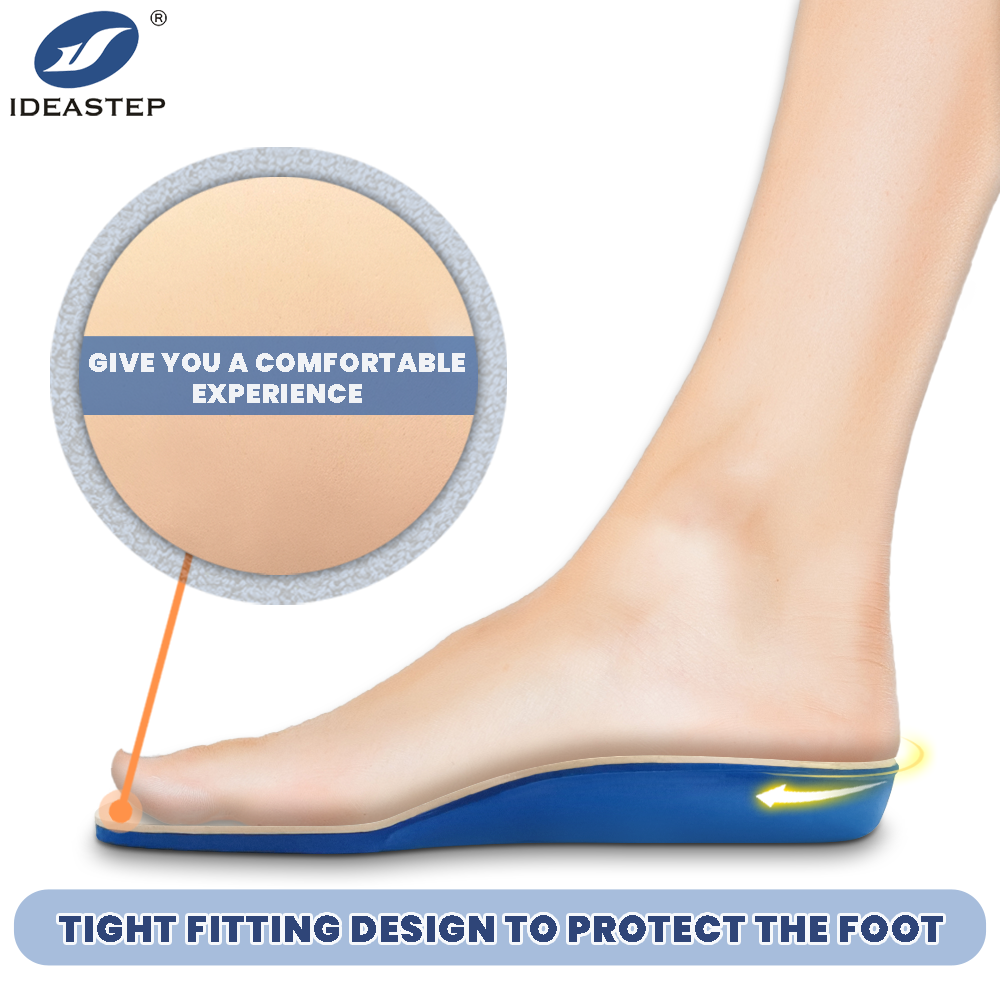As a semi-solid material, gel has been widely used in the production of insoles due to its excellent shock-absorbing properties and temperature sensitivity. So, is gel suitable for making diabetic insoles? Next we will explore this issue by analyzing the material properties of the gel and its performance in diabetic insoles.

Material properties of gel:
Shock-absorbing properties: The gel has excellent shock-absorbing properties and can effectively absorb and disperse shock and vibration to the foot. This is especially important for diabetics who need to walk or stand for long periods of time and can help reduce foot fatigue and pain.
Temperature Sensitivity: The gel is temperature sensitive and adapts to changes in the foot’s temperature. This allows the gel insole to better fit the foot during wear, providing personalized support and comfort.
Softness: The gel has a soft texture that adapts well to the shape and pressure distribution of the foot. This softness helps reduce pressure on the feet and improves wearing comfort.
Performance of finished diabetic insoles made of gel:
Shock-absorbing effect: Through actual testing and user feedback, diabetic insoles made of gel perform well in terms of shock-absorbing effect. It can effectively absorb the impact caused when walking and standing, reducing the burden on the foot.
Temperature adaptability: The gel insole can adapt well to temperature changes of the foot in actual use, providing personalized support and comfort. This is especially important for people with diabetes, who may experience temperature changes in their feet due to poor blood circulation.
Breathability: While gel itself may not be as breathable as some other materials, gel insoles can still achieve good breathability through special design and manufacturing processes. This helps keep feet dry and clean, reducing bacterial growth.
How foot care works for people with diabetes:
Based on clinical feedback and user reviews, diabetic insoles made with gel perform exceptionally well in foot care. It can effectively absorb and disperse the impact and vibration on the foot, reducing the patient’s pain and fatigue. At the same time, its temperature sensitivity and softness also provide personalized support and comfort, helping to improve patients’ quality of life.
The unique advantages of gel in making diabetic insoles:
Excellent shock-absorbing properties: The shock-absorbing properties of gel make it one of the ideal materials for making diabetic insoles. It can effectively absorb and disperse the impact and vibration on the foot, reducing pressure and pain on the foot.
Temperature Adaptability: The gel is temperature sensitive and can adapt to changes in foot temperature. This allows the gel insole to better fit the foot, providing personalized support and comfort.
Softness and Comfort: The soft texture of the gel allows it to adapt well to the shape and pressure distribution of the foot, providing a comfortable wearing experience. This is especially important for people with diabetes who need to walk or stand for long periods of time.
In summary, combined with the material properties of gel and its application performance in diabetic insoles, it can be concluded that gel is suitable for making diabetic insoles. Its excellent shock-absorbing properties, temperature adaptability and soft comfort give it unique advantages in diabetic foot care. With proper design and manufacturing processes, gel insoles are expected to become an ideal foot care option for diabetic patients.
